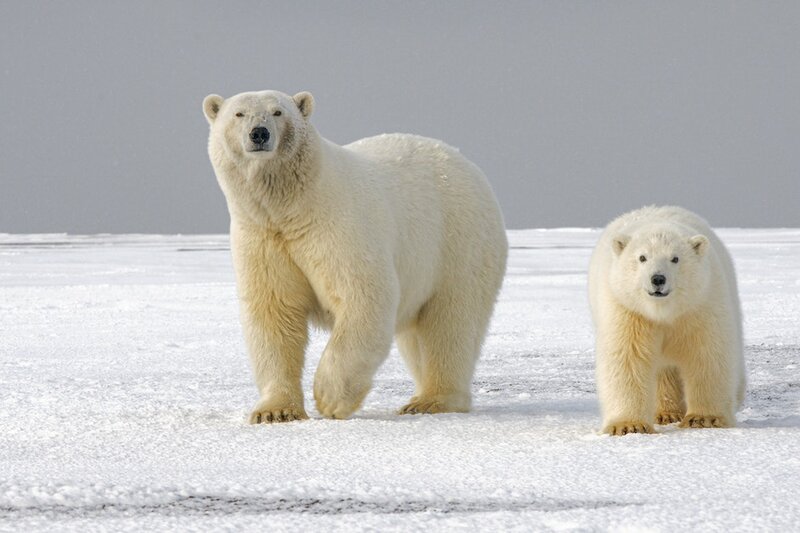For 15 years, a federal standard has prevented regulators from considering planet-warming emissions when enforcing the Endangered Species Act, a federal law aimed at protecting species at risk of extinction.
But now, researchers at the University of Washington and Polar Bears International believe they’ve found a way to close that loophole. It's a finding that they hope will actually protect polar bears — the poster children for climate change — for real this time.
Scientists behind a recent study found that polar bears can go without food for hundreds of days. However, around 117 days of fasting, female polar bears face a decision to feed themselves instead of their cubs, making the future survival of polar bears more difficult.
"As the sea ice melts in the summertime, seals can still catch fish and other organisms that they feed on, while swimming around all summer long," said Steve Amstrup, a co-author of the study and chief scientist emeritus at Polar Bears International. "But polar bears can't swim as well as seals can, so that potential food source is unavailable when sea ice is unavailable."
By connecting greenhouse gas emissions to shrinking ice sheets, and those shrinking ice sheets to the loss of feeding opportunities for polar bears, Amstrup and his co-author, Cecilia Bitz, believe they've developed a methodology that clearly links new emissions and threats to endangered species.



 Science
Science Climate Change
Climate Change Wildlife
Wildlife Arctic Ocean
Arctic Ocean


